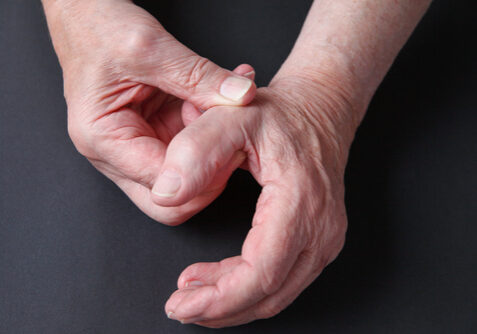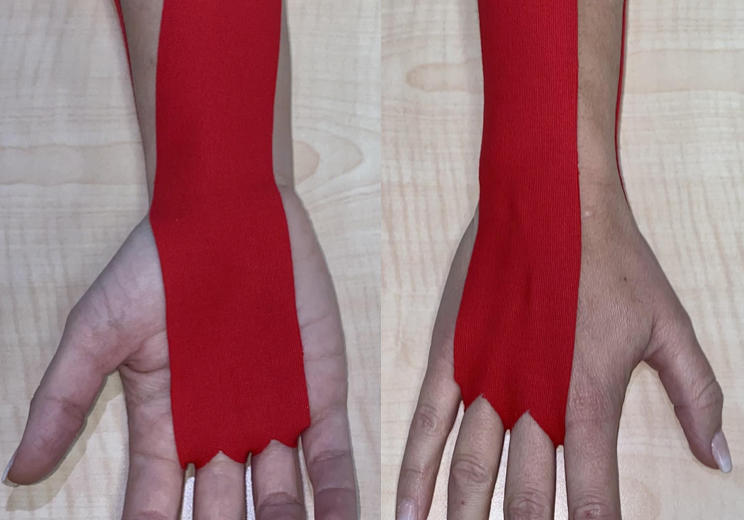How to Improve HEP Adherence for Optimal Rehabilitation Outcomes
Filed under Treatments
By Sophia Grimm
A lack of adherence to home exercise programs in rehabilitation is a significant problem, with nonadherence estimates as high as 30-65% for general musculoskeletal conditions. This could have potentially detrimental effects on patients’ clinical rehabilitation outcomes as the success of certain medical interventions depends largely on patient adherence to advice and prescribed rehabilitation regimes. Therapists who do not consider patient adherence to HEP may unnecessarily alter their treatment approach, face persistent patient complaints, or refer patients for alternative opinion- thereby contributing to possible unnecessary surgical intervention and additional health care costs.
What is hep in physical therapy?
The World Health Organization (WHO) currently defines HEP adherence as “the extent to which a person’s behavior corresponds with agreed recommendations from a health care provider.”
Possible Factors Affecting HEP Adherence
- Self-efficacy has been strongly linked as a psychological factor affecting HEP hand therapy adherence.
- Beliefs a patient holds regarding their condition or disease are also a direct factor affecting HEP adherence. Patients make decisions based on their own beliefs, personal experiences, and the information they receive. For example, patients who do not consider their injury/condition/disease to be serious demonstrate lower HEP compliance levels on average.
- Locus of control perceived by the patient – patients with an external locus of control demonstrate lower rates of HEP adherence
- Higher pain levels during exercises often indicate a barrier to HEP compliance.
- The level of physical activity at a patient’s baseline may also be a barrier to full compliance.
- Psychological symptoms such as depression, anxiety, or neuroticism often present as barriers to adherence.
- The level of support the patient has. The patient’s social support network can consist of friends, family members, and support from the therapist.
- Patients’ perceived barriers are among the most widely documented barriers to HEP adherence, with examples such as forgetting to exercise, not having the time, or not fitting into the daily routine.
- The high degree of helplessness
Research shows that a long all-encompassing list of exercises may not be the most effective when prescribing a HEP regime. Patients tend to adhere best to 2 or fewer prescribed exercises than a list of 4 or 8. Prescribing 2 or fewer exercises leads to better performance, frequency, and self-reported compliance.

Strategies to Increase Adherence
- Patient education is a key factor in improving adherence to HEP. Patients benefit greatly from education on pain versus harm by explaining the nature of pain and suspending the common belief that pain is an indicator of further damage to reduce fear and anxiety of exercises.
- Use motivational interviewing to help the patient set their own goals for therapy.
- Minimize pain during HEP by educating the patient on using heat, ice, TENS, etc.
- Progress the patient slowly with their HEP to reduce fear and anxiety of pain
- Provide the patient with a clear handout and verbal instructions of HEP, check the patient’s understanding and recall of exercises.
- Don’t overwhelm the patient with too many exercises at once.
- Encourage patients to keep exercise logs, diaries, and logs to track their progress and symptoms. Review exercise and symptom logs during each treatment session.
- Provide patients with pictures and videos of themselves performing the prescribed exercises.
- Establish a personalized HEP with the patient to increase the patient’s feeling of control.
- Use health technologies such as phones, tablets, smartwatches to track progress, help the patient self-monitor program adherence. Apps allow users to set fitness goals, track activity, gather workout ideas and share their progress on social media.
- Make yourself available. A lack of social support can dramatically hinder a patient’s progress, so let your patients know that you’re available to provide support and that you’re invested in their recovery. You may even want to check in with patients after hours to discuss home exercise program progress and answer any questions they may have. Patient engagement software can be a big help when it comes to providing consistent support.
Overall, every patient is unique, and a one-size-fits-all approach will not help your patients succeed. It is important to focus on the patient-provider relationship, be a source of encouragement and support for your patients, and help your patients overcome their barriers. This will increase HEP adherence and thus improve therapy outcomes.
References
Adherence to Home Exercise Programs. (2020, May 21). Physiopedia, . Retrieved 21:03, November 1, 2020 from https://www.physio-pedia.com/index.php?title=Adherence_to_Home_Exercise_Programs&oldid=238871.
Argent, R., Daly, A., & Caulfield, B. (2018). Patient Involvement With Home-Based Exercise Programs: Can Connected Health Interventions Influence Adherence?. JMIR mHealth and uHealth, 6(3), e47. https://doi.org/10.2196/mhealth.8518
Klepps, R. (2020, January 10). Home Exercise Program Adherence in Physical Therapy (HEP Physical Therapy). Retrieved November 01, 2020, from https://www.webpt.com/blog/post/improving-home-exercise-program-adherence-in-physical-therapy/
Parsons, A. (2018, April 02). 4 Tips to Maximize Home Exercise Program Participation. Retrieved November 01, 2020, from https://www.medbridgeeducation.com/blog/2018/03/4-tips-maximize-home-exercise-program-participation/
2 Comments
Leave a Comment
More To Read
Pediatric & Adolescent Shoulder Instability
Lin, K.M, James, E.W., Spitze, E. & Fabricant, P.D. (2018). Pediatric and adolescent anterior shoulder instability: Clinical management of first-time dislocators. Current opinion in pediatrics, 30, 49-56. doi: 10.1097/MOP.0000000000000566. The Skinny: Shoulder instability for pediatric and adolescent patients is fairly common and is often complicated by a high re-dislocation rate. Shoulder instability typically occurs after…
Read MoreChanges in ROM of the MCP after Trapeziometacarpal Arthrodesis
Rapid Review: Changes in ROM of the MCP after Trapeziometacarpal Arthrodesis Hayashi, M., Kato, H., Komatsu, M., Yamazaki, H., Uchiyama, S., & Takahashi, J. (2021). Changes in the Functional Range of Motion of the Thumb Metacarpophalangeal Joint After Trapeziometacarpal Arthrodesis for Patients With Advanced Trapeziometacarpal Osteoarthritis. The Journal of hand surgery, S0363-5023(21)00613-4. Advance online publication. https://doi.org/10.1016/j.jhsa.2021.09.018. The Skinny: Several published…
Read MoreManaging UE Edema in Hand Therapy
Tricks for UE Edema Management By: Dalton Busch Edema is seen in patients for many reasons whether that be from an injury, lack of movement in the UE, side effects of a new medication, and even possible underlying medical conditions. Edema can not only add discomfort to our patients but also limit the number of…
Read MoreSign-up to Get Updates Straight to Your Inbox!
Sign up with us and we will send you regular blog posts on everything hand therapy, notices every time we upload new videos and tutorials, along with handout, protocols, and other useful information.






Hi, Can you explain bullet point #3 at the top “Locus of control” and “external locus” under perceived factors affecting HEP. Did you mean “focus” if not please explain. Also thank you for this blog as I am a home health OT and I do struggle with compliance with some patients not all with a HEP. The motivated patients who have positive attitudes definitely participate more.
Thank you again, Kelly Barlow, OTR/L
Hi Kelly,
Thank you for reaching out with your question. We did mean locus on control. This is the definition form psychology todayCOMMENTS
Locus of control is an individual’s belief system regarding the causes of his or her experiences and the factors to which that person attributes success or failure. People who have an external locus of control typically think what happens to them does not have anything to do with their actions but more with the environment around them. People with an internal locus of control believe that they control their destiny and what happens to them. So people with a strong internal locus of control may be more likely to do their exercises. Neither is good nor bad, but if you can identify if they have an internal or external locus on control this can help how to taylor your exericses.
Miranda